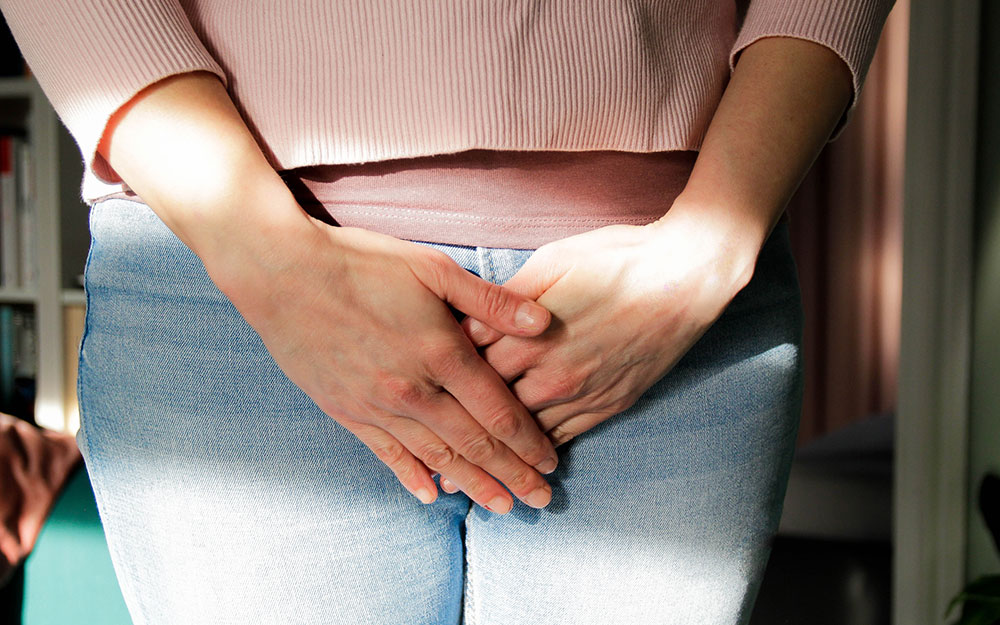Can Digital Devices Help Exercise Your Pelvic Floor?
Date
June 22, 2019
Credits

Date
June 22, 2019
Credits
Medical providers featured in this article
In Brief
{{cta-block}}
Seems like there's a gadget to go with every kind of workout. Pedometers. Smart shoes. Sport coach earbuds. Smart dumbbells.
And now … Kegels.
"If you like something that tracks your progress, it can help you remember to do your exercises and have more fun doing them."
More and more gizmos are popping up to help women strengthen their pelvic floor muscles, promising they can make sex more satisfying and sneezes less leaky.
Or at the very least, they can make Kegel exercises—one of those healthy habits like flossing that you probably skip more often than you want to admit—less boring.
Some of these devices have an insertable component that connects wirelessly to cellphones, allowing the device to measure the strength of a Kegel muscle contraction or, in some cases, play games. That's right—play games with your pelvic floor muscles.
Some even offer vibrating features to mix exercise with additional pleasure.
Who are they for?
Before sinking up to $300 into a Kegel gadget, there's one crucial question to ask yourself, says Kristin Christensen, a physical therapist who specializes in women's health.
"Are you a techie or a gadget person?" she says.
"What we know from experience and the research that's out there is devices that offer us biofeedback don't necessarily make us stronger faster, but they can get us more motivated."
"So if you like something that tracks your progress, it can help you remember to do your exercises and have more fun doing them."
On the other hand, if having to wash and store a device is going to be one more hassle or excuse, it might not be for you, she says.
Kegel weights have been around longer and can have the same benefits as newer gadgets because they offer some tactile sensation and give you confidence you’re doing the exercises correctly.
In the Newsroom: Fitness Trackers Prove Helpful in Monitoring Cancer Patients
How do I pick a Kegel exerciser?
Kristin's patients frequently ask her about the options and she offers them these tips:
- It's more about your personality than your physiology: The electronic devices are a bit like Fitbits for your pelvic floor. If a Fitbit helps you move more, then one of these digital Kegel exercisers might be beneficial.
- They're not fool-proof: It still takes some work to figure out how to do the contraction properly. It's possible to squeeze the wrong muscles and still get positive feedback from the devices.
- Don't forget physical therapy: If you're recovering from delivering a baby or have a pelvic floor issue, seeing a physical therapist could still be your best bet.
Physical therapy can help you establish a routine and learn different exercises to strengthen those muscles—then a device or weight can become part of your maintenance plan. - Look for FDA approval: Some of the devices out there have gone through an FDA approval process, which means their effectiveness for reducing or stopping urinary incontinence has been tested.
Physical therapy can help you establish a routine and learn different exercises to strengthen those muscles.
- Cleanliness is key: Recently, jade eggs became popular for pelvic floor exercise and resulted in some people getting infections because the material is porous and hard to clean. Look for tools made with non-porous, medical grade, and hypoallergenic materials.
- Low-tech still works: If you want to be sure you're using Kegels properly, try doing them in front of a mirror. Kristin says look for a "wink" effect—you should see your vulva close and pull inward a little. And there's the original digital option: A finger. Make sure you feel squeezing. If you feel a pushing effect, then you're doing the opposite movement of the contraction you want for an effective Kegel.
- Try something new: The classic explanation of doing Kegels correctly is trying to stop the flow of urine midstream, but Kristin and other experts warn this can train your bladder not to empty. It can be useful to let you figure out where the muscles are, but don't make this your go-to workout.
"So many women can be shy about these problems and don’t know there’s help for them."
Unexpected benefits
One of the other major benefits of these products: The conversations they're starting.
Women are often reluctant to talk about pain during sex, unsatisfying sex, or incontinence problems. Now forums are springing up online. Candid ads are slipping into social media feeds.
"So many women can be shy about these problems and don't know there's help for them," Kristin says.
"Getting the public eye on these issues can help raise awareness."





